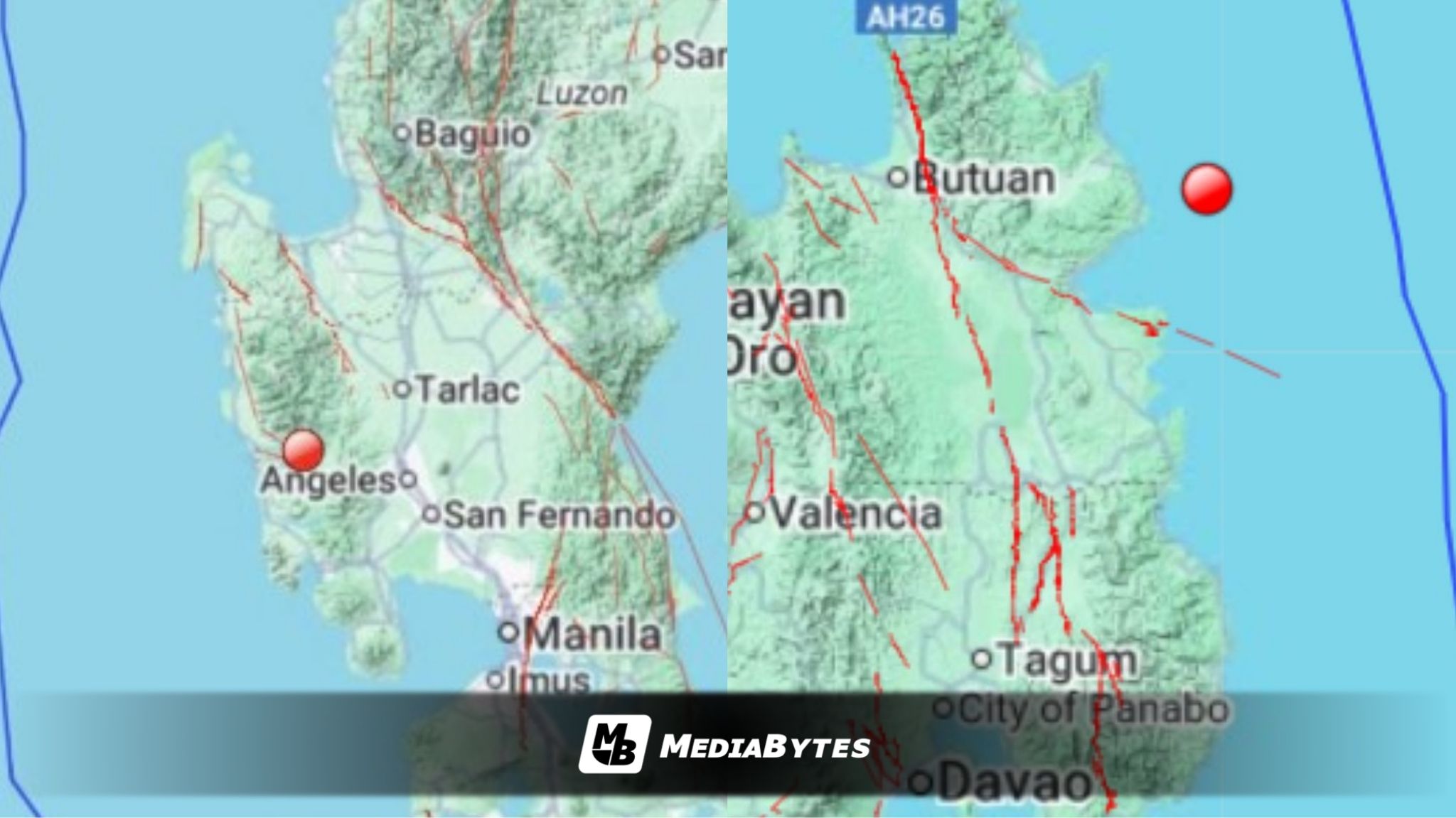The Philippine Institute of Volcanology and Seismology (PHIVOLCS) recorded two separate earthquakes on Saturday, October 11, striking parts of Zambales and Surigao del Sur just hours apart.
MAGNITUDE 4.9 QUAKE IN ZAMBALES
At 5:32 PM, a magnitude 4.9 earthquake was recorded in Cabangan, Zambales. PHIVOLCS said the tremor was tectonic in origin with a depth of 100 kilometers.

Instrumental Intensity III was reported in Cabangan and Iba, Zambales, while Intensity II was felt in some areas of Bulacan, La Union, Nueva Ecija, Pangasinan, Tarlac, and other parts of Zambales.
This quake followed the magnitude 7.4 and 6.8 doublet earthquakes that struck off Manay, Davao Oriental a day earlier, and came just 11 days after the magnitude 6.9 tremor in Bogo City, Cebu.
MAGNITUDE 6.0 IN SURIGAO DEL SUR
Later that night, at 10:32 PM, a magnitude 6.0 earthquake struck Cagwait, Surigao del Sur at a depth of 24 kilometers.

Reported intensities were as follows:
- Intensity IV: Cagwait and Carmen, Surigao del Sur; Cities of Cagayan de Oro, Davao, and Butuan
- Intensity III: Abuyog, Hinunangan, Hinundayan, San Francisco, and Silago, Southern Leyte; Cabanglasan, Don Carlos, and San Fernando, Bukidnon; Cities of Malaybalay, Bislig, and Mati
- Intensity II: Alangalang, Baybay, Dulag, Javier, and Palo, Leyte; Catbalogan City, Samar; Sogod, Southern Leyte; Libona, Bukidnon; Cities of Gingoog and Surigao; Initao, Misamis Oriental
Instrumental intensities registered as:
- Intensity IV: Hinunangan, Southern Leyte; Cabadbaran City, Agusan del Norte; Nabunturan, Davao de Oro; Tandag City, Surigao del Sur
- Intensity III: Abuyog and Dulag, Leyte; Hinundayan and Silago, Southern Leyte; San Fernando, Bukidnon; Cities of Digos, Gingoog, Surigao, and Bislig; Malungon, Sarangani
- Intensity II: Alangalang and Baybay City, Leyte; Sogod, Southern Leyte
- Intensity I: Javier, Leyte
PHIVOLCS has not issued a tsunami warning following the twin earthquakes but continues to monitor aftershocks and possible related seismic activity.



